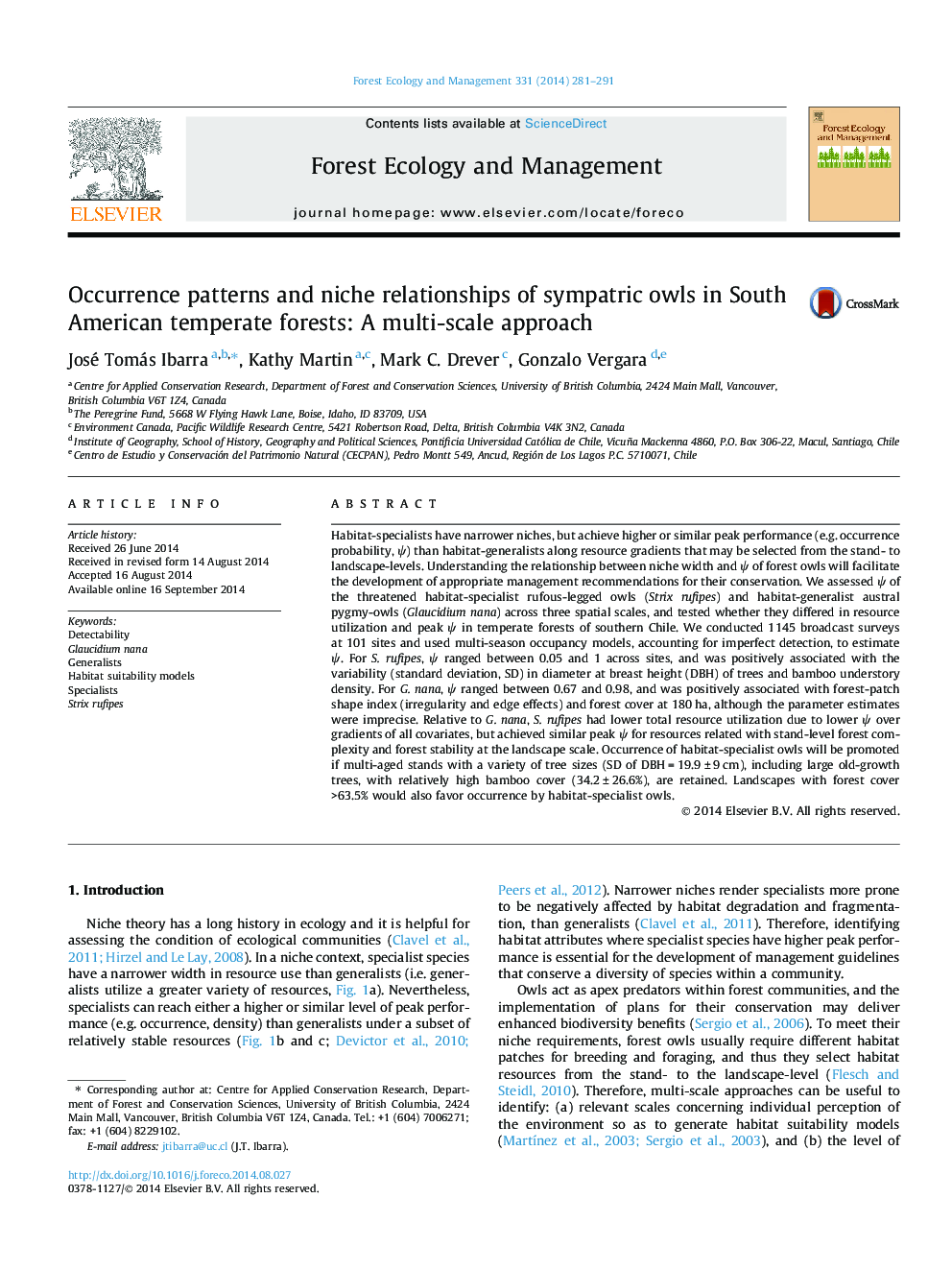| کد مقاله | کد نشریه | سال انتشار | مقاله انگلیسی | نسخه تمام متن |
|---|---|---|---|---|
| 86465 | 159189 | 2014 | 11 صفحه PDF | دانلود رایگان |
• We tested how sympatric owls differed in resource utilization and peak occurrence.
• Relative to generalist owls, specialists had lower total resource use.
• Both owls had similar peak occurrence for a subset of forest resources.
• Multi-aged stands with large trees and high bamboo cover will benefit both owls.
Habitat-specialists have narrower niches, but achieve higher or similar peak performance (e.g. occurrence probability, ψ) than habitat-generalists along resource gradients that may be selected from the stand- to landscape-levels. Understanding the relationship between niche width and ψ of forest owls will facilitate the development of appropriate management recommendations for their conservation. We assessed ψ of the threatened habitat-specialist rufous-legged owls (Strix rufipes) and habitat-generalist austral pygmy-owls (Glaucidium nana) across three spatial scales, and tested whether they differed in resource utilization and peak ψ in temperate forests of southern Chile. We conducted 1145 broadcast surveys at 101 sites and used multi-season occupancy models, accounting for imperfect detection, to estimate ψ. For S. rufipes, ψ ranged between 0.05 and 1 across sites, and was positively associated with the variability (standard deviation, SD) in diameter at breast height (DBH) of trees and bamboo understory density. For G. nana, ψ ranged between 0.67 and 0.98, and was positively associated with forest-patch shape index (irregularity and edge effects) and forest cover at 180 ha, although the parameter estimates were imprecise. Relative to G. nana, S. rufipes had lower total resource utilization due to lower ψ over gradients of all covariates, but achieved similar peak ψ for resources related with stand-level forest complexity and forest stability at the landscape scale. Occurrence of habitat-specialist owls will be promoted if multi-aged stands with a variety of tree sizes (SD of DBH = 19.9 ± 9 cm), including large old-growth trees, with relatively high bamboo cover (34.2 ± 26.6%), are retained. Landscapes with forest cover >63.5% would also favor occurrence by habitat-specialist owls.
Figure optionsDownload as PowerPoint slide
Journal: Forest Ecology and Management - Volume 331, 1 November 2014, Pages 281–291
